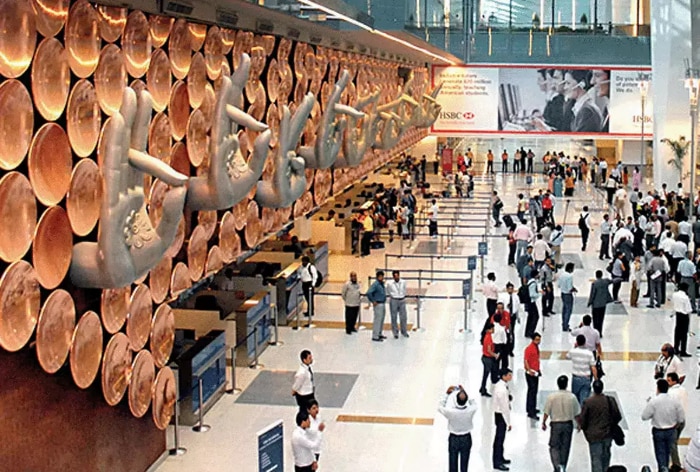Waiting time on planes at Delhi IGI airport is reduced by 10 minutes; Here’s everything about India’s first elevated dual taxiway
The distance an aircraft has to travel after landing on the third runway and going to T1 will be reduced to 2 km from the current 9 km.
New Delhi: The Indira Gandhi International (IGI) Airport, managed and operated by Delhi International Airport Limited (DIAL) – a consortium led by GMR Airports Infrastructure, is all set to introduce the first of its kind elevated dual taxiways connecting the northern and southern airports connecting on the east side of the airport.
The 2.1 km two-lane Elevated Cross Taxiway will be inaugurated on July 13 by Union Civil Aviation Minister Jyotiraditya Scindia at Delhi’s Indira Gandhi International Airport.
Delhi International Airport Limited (DIAL) inquired about India’s first elevated cross taxiway Eastern Cross Taxiway (ECT) with roads underneath, saying, “It will connect the north and south airports on the eastern side of the airport and will take approximately 7 to 20 minutes passengers, depending on factors such as the direction of landing of the aircraft.”
Why is ECT (Eastern cross taxiways) important?
- According to officials, the purpose of the Elevated Cross Taxiway is to reduce aircraft taxi distances, reduce aircraft emissions and conserve natural resources such as ATF, and improve operational efficiency.
- Furthermore, the taxiway is expected to optimize taxi routes and aircraft operations, resulting in a reduction of approximately 55,000 tons of CO2 per year.
- It will help achieve a “Net Zero Carbon Emission Airport” by 2030, a statement said.
- The ECT will also help improve the passenger experience, as they spend less time on the plane after landing or during takeoff. The waiting time in an airplane is now reduced from 20-25 minutes to about 10 minutes.
- The distance an aircraft has to travel after landing on the third runway and going to T1 will be reduced to 2 km from the current 9 km.
- The elevated two-lane Code F taxiways can accommodate large aircraft and wide-body jets such as A380, 8777 and B747-8. It allows the safe and simultaneous passage of two large aircraft, an official statement said.
- Even people driving to and from T2 and T3 could see planes taxiing overhead at ECT.
- The Radisson road, which leads from Gurugram Circle to the Centaur Hotel, will be realigned for a 1 km stretch to form a tunnel to pass under ECT, while ECT will form an elevated bridge over Central Spine Road, which will connect Mahipalpur and T3 connects.
The ECT is being built as part of expansion work, which will also see IGI Airport receiving a new fourth runway, a larger and integrated Terminal 1, a recently expanded T1 aircraft parking platform, several new taxiways and landside developments in addition to a host of technological improvements. It also increases the efficiency of operations. Every infrastructure development is the development of the country.

Don’t miss the latest updates.
Subscribe to our newsletter today!



